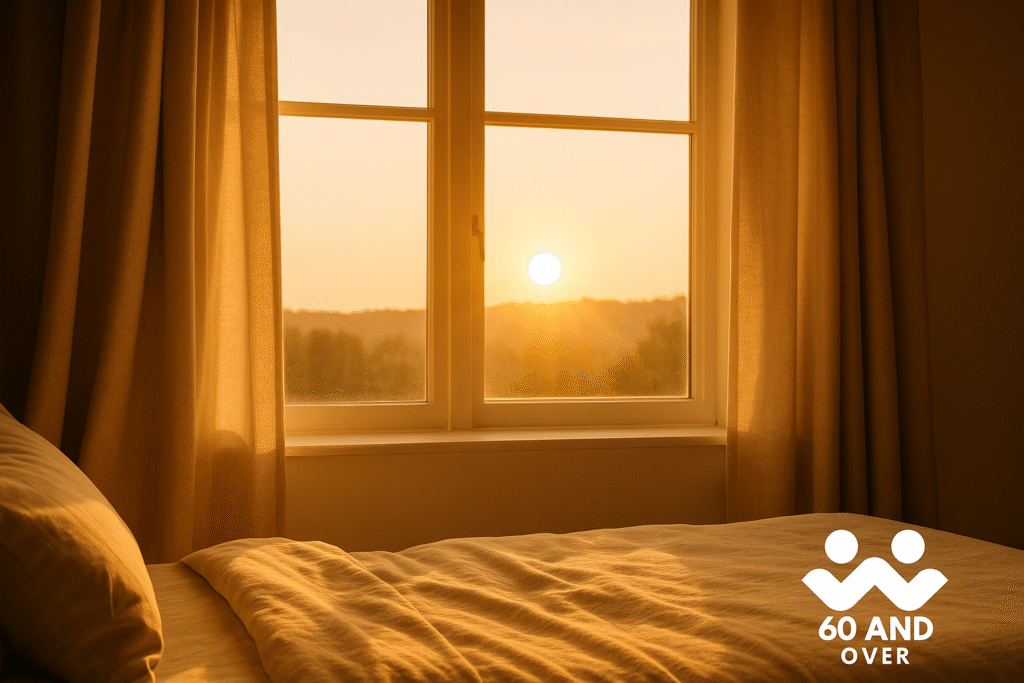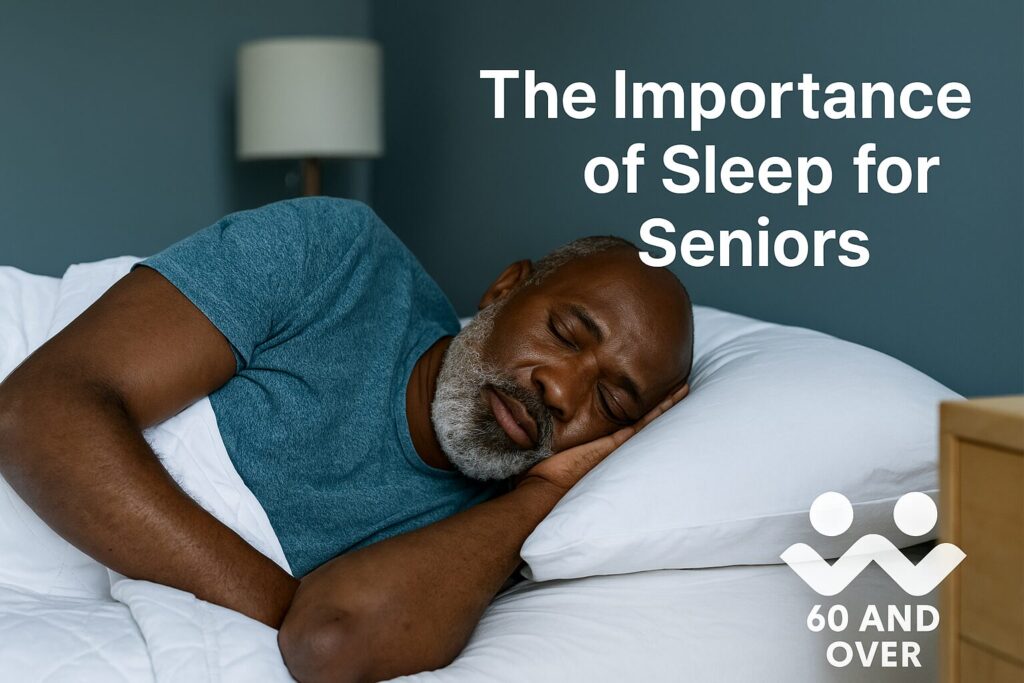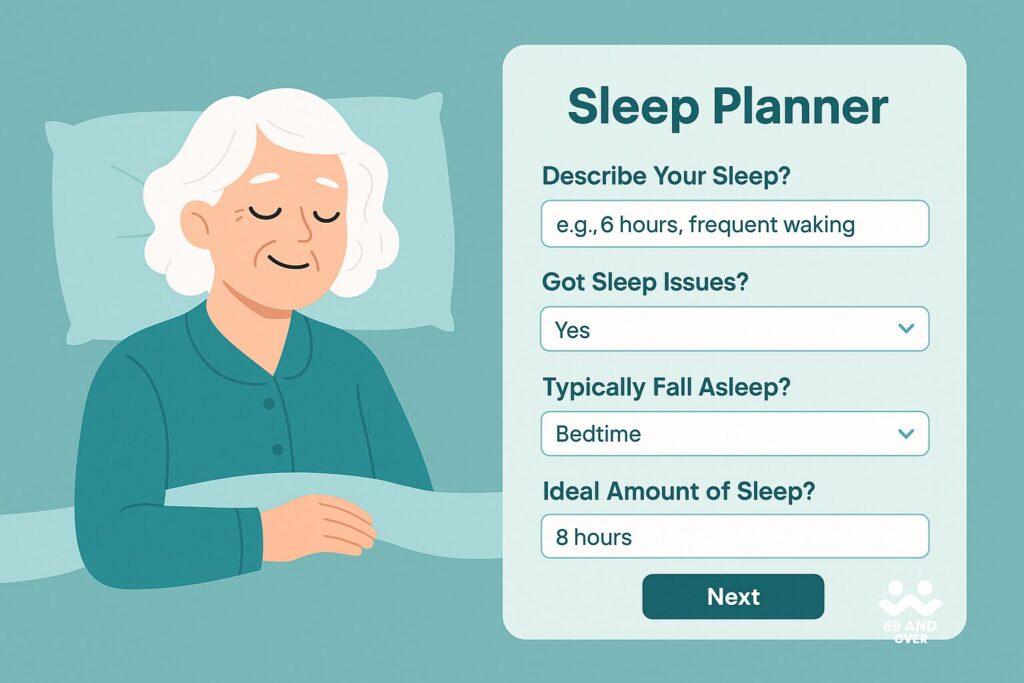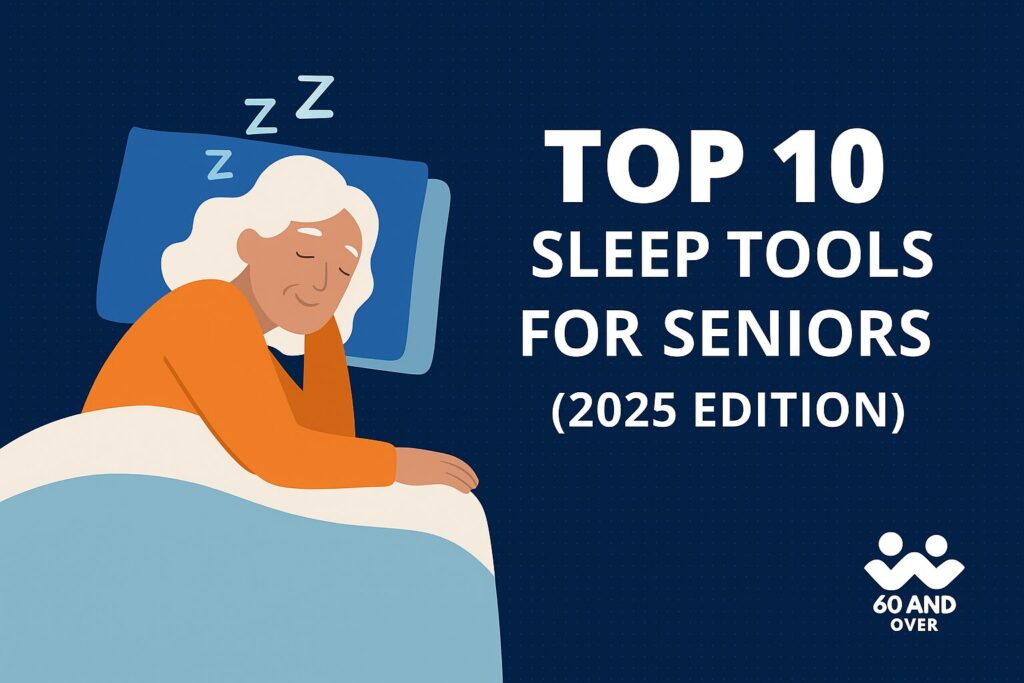Why Morning Light Matters More After 60
Have you noticed it’s harder to fall asleep at night or stay asleep until morning? That shift is often tied to your circadian rhythm — your body’s natural 24-hour clock that tells you when to feel alert or sleepy.
After 60, this internal timer tends to drift earlier, meaning you may grow tired sooner in the evening and wake up too early. The easiest, most natural way to reset that rhythm is morning light exposure.
Sunlight acts as a cue to your brain, regulating melatonin — the hormone that controls sleep and wakefulness. Just 15–30 minutes of daylight in the morning can help your body relearn when to wake, rest, and recharge.
1. The Science of Sunlight and Sleep
Morning light hits specialized cells in your eyes called intrinsically photosensitive retinal ganglion cells (ipRGCs). These cells signal your brain’s master clock (the suprachiasmatic nucleus) to lower melatonin levels, helping you wake up naturally and stay alert through the day.
When your eyes don’t get this light cue — especially during darker months — your body can stay in “sleep mode,” leading to grogginess, insomnia, or even seasonal mood dips.
According to research from the National Institutes of Health, consistent morning light exposure strengthens circadian rhythm stability and promotes deeper sleep at night.
2. Easy Ways to Get More Natural Light
Step outside early. Within 30–60 minutes of waking, sit near a sunny window or take a short walk. Even light on cloudy days is far stronger than indoor bulbs.
Open curtains wide. Natural light exposure indoors still helps; position your breakfast table or reading chair where sunlight hits directly.
Consider your timing. Aim for light between 6:30 AM and 9:00 AM, depending on your schedule. Try to make it part of your daily routine — like coffee or stretching.
Go screen-free. Resist checking your phone first thing. Instead, look outside for a minute or two; this simple act helps your eyes adjust naturally to daylight and sets your body’s internal clock.
3. When Natural Light Isn’t Enough
If mornings are dark or you live in northern regions, a sunrise alarm clock or light therapy lamp can help. These devices mimic the gentle rise of sunlight and gradually brighten your room to signal “wake-up time.”
A favorite among older adults is the Hatch Restore 2 or Lumie Bodyclock Shine 300, both of which allow you to choose gradual brightness levels and calming wake-up sounds.
👉 See more options: Best Sunrise Alarm Clocks for Seniors in 2025
4. Aligning Daily Habits With Light Exposure
Your sleep clock doesn’t run on light alone — it syncs with other daily cues. Here’s how to support your morning light exposure with healthy habits:
- Keep a consistent schedule: Go to bed and wake up at roughly the same times, even on weekends.
- Limit caffeine after noon: Too much later in the day can delay sleep onset.
- Get gentle exercise in daylight: A morning or early-afternoon walk reinforces your natural energy curve.
- Use dim light at night: Bright indoor lighting before bedtime confuses your body’s signals. Try low-watt lamps or soft amber bulbs.
5. Benefits Beyond Better Sleep
Morning light exposure doesn’t just improve rest — it enhances overall wellness:
- Sharper alertness and memory during the day
- Improved mood and lower rates of seasonal depression
- Stable appetite and energy cycles
- Reduced need for naps
- Better nighttime melatonin release
These benefits compound over time, meaning every morning of consistent light builds toward more stable, restorative sleep.
6. Light and Aging Eyes
As we age, our pupils shrink and the eye’s lens becomes less transparent, reducing the amount of light that reaches the retina. That means older adults may need more exposure than younger adults to achieve the same circadian effect.
If mobility is limited, place a comfortable chair near a bright window. You can even use a light therapy lamp on a side table for 20 minutes while reading or enjoying breakfast.
7. Evening Light: The Other Half of the Equation
Just as morning light wakes you, evening light delays sleep.
Avoid exposure to bright white or blue-toned light from televisions, smartphones, and LED bulbs after sunset.
If you enjoy reading before bed, choose a warm amber bedside lamp. The softer hue reduces alertness and encourages melatonin production.
Consider pairing that low light with relaxing rituals — chamomile tea, light stretching, or aromatherapy. These small cues help your brain recognize, “It’s time to wind down.”
👉 Related article: Simple Relaxation Techniques to Help Seniors Sleep Naturally
8. A One-Week Light Reset Plan
If your sleep schedule feels off, try this gentle plan:
| Day | Morning Light Goal | Evening Routine |
|---|---|---|
| Day 1–2 | 15 min outdoors within 1 hr of waking | Dim lights 1 hr before bed |
| Day 3–4 | 20 min light + short walk | No screens after 9 PM |
| Day 5–6 | 25 min light + gentle movement | Warm tea and reading before bed |
| Day 7 | Keep routine consistent | Review progress, note how you feel |
By the end of the week, most people notice they’re falling asleep faster and waking more refreshed — all without medication.
💤 Final Thoughts
Your body’s clock never stops ticking — it just needs the right light to stay on time. Morning sunlight is nature’s alarm, telling your brain when to start the day and when to rest at night.
So tomorrow, open your curtains, take in the sunrise, and let your body find its rhythm again.
Your best sleep might just begin with the morning light.
🧠 More Helpful Sleep Reads
- How to Improve Your Sleep Routine Naturally After 60
- Best Sunrise Alarm Clocks for Seniors in 2025
- Best Comfortable Bedding for Seniors in 2025
🩵 Friendly Note
This article shares general wellness information — not medical advice. Always consult your healthcare provider before starting light therapy or new routines if you have vision concerns or existing sleep disorders.
💤 FAQ
1. How does morning light improve sleep for seniors?
It helps reset the circadian rhythm by reducing morning melatonin and promoting nighttime release, leading to deeper, more consistent sleep.
2. How long should seniors spend in sunlight daily?
About 15–30 minutes of morning light exposure, ideally within an hour of waking.
3. Can I use a light therapy lamp instead of real sunlight?
Yes — light therapy lamps can mimic natural light and are especially helpful in winter or low-light regions.





